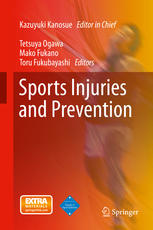

Most ebook files are in PDF format, so you can easily read them using various software such as Foxit Reader or directly on the Google Chrome browser.
Some ebook files are released by publishers in other formats such as .awz, .mobi, .epub, .fb2, etc. You may need to install specific software to read these formats on mobile/PC, such as Calibre.
Please read the tutorial at this link: https://ebookbell.com/faq
We offer FREE conversion to the popular formats you request; however, this may take some time. Therefore, right after payment, please email us, and we will try to provide the service as quickly as possible.
For some exceptional file formats or broken links (if any), please refrain from opening any disputes. Instead, email us first, and we will try to assist within a maximum of 6 hours.
EbookBell Team

4.1
30 reviewsThis book presents the incidence of sports-related injuries, the types of injuries specific to particular sports, and the importance of factors such as age and gender. Possible injury mechanisms and risk factors are presented based on an analysis involving recent scientific findings. A variety of sports are included to allow the reader to better generalize the results as well as to apply appropriate procedures to specific sports. The authors have emphasized basic scientific findings to help the reader gain a broad knowledge of sports injuries. The potential audience includes medical doctors, physical therapists, athletic trainers, coaches and interested parents. This book is expected to play a prominent role in the construction of training programs for both healthy and injured players. The focus on junior athletes will aid in their education, injury prevention and increased performance. It will also benefit instructors at the junior and senior high school levels.
The book is composed of seven parts. In the beginning part, current situations and the general characteristics of sports-related injuries are outlined on the basis of an investigation utilizing statistical data involving a large number of populations. In the following parts, detailed information on the injuries in terms of the types of sports activities, body sites, symptoms and the relationships among these factors are discussed. Part 2, for example, deals with topics on concussion and severe head–neck injuries which occur frequently in rugby and judo. In Parts 3 and 4, as one of the major sports-related injuries, anterior cruciate ligament (ACL) injuries are discussed. Beginning with the underlying mechanisms as assessed by using the latest measuring techniques, characteristic features of their occurrence are described. Further, Part 4 deals with topics on post-operative (ACL reconstruction) aspects of ACL injuries, especially those related to muscle functions and tendon regeneration in the hamstring muscles. Part 5 deals with muscle strain and focuses particularly on those occurring in the hamstring muscles, as this muscle group is known, as one of the most frequent sites of muscle strain. In Part 6, disorders related to the ankle and foot are introduced. Finally, Part 7 provides information on lower back disorders. Included are detailed mechanisms of their incidence, epidemiology and implications for their prevention.